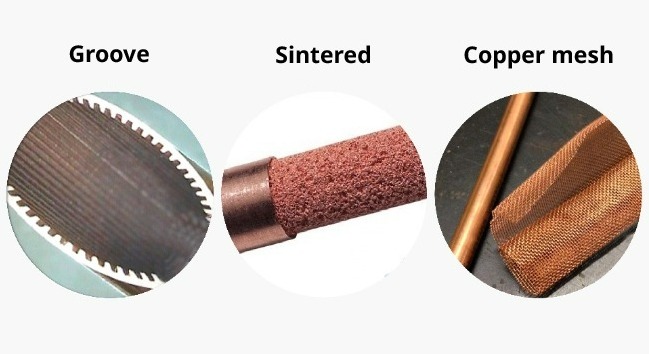In accordance with the European Union’s General Data Protection Regulation (GDPR), we are committed to safeguarding and ensuring your control over your personal data. By clicking “Accept All” you are permitting us to use cookies to enhance your browsing experience, assist us in analyzing website performance and usage, and deliver relevant marketing content. You can manage your cookie settings below. By clicking “Confirm” you are agreeing to the current settings.
Introduction to the Capillary Structure of Heat Pipes

Assuming that a heat source is situated at a higher place and the space for the heat sink fin lower, when a heat pipe is needed as a heat transfer element, the medium in the heat pipe is transferred back to the vaporization end from the condensing end by means of capillary phenomena generated by the capillary structure inside the heat pipe.
At this point the vaporization end is higher than the condensing end which means that the medium has to resist gravity in order to return to the heat source/vaporization end through capillarity. These capillary force structures within the heat pipe are currently grooved, sintered, mesh, etc.
Each structure has its own range of suitability. In the example given so far, the sintered capillary structure is more resistant to gravity when the vaporization end is higher than the condensing end, but not all sintered structures can overcome the effects of gravity. Therefore, it is important to discuss the design with the T-Global team and to adjust the relevant parameters accordingly.
